Q
How much oil does a Lancer need?
The oil capacity of the Mitsubishi Lancer typically ranges from 3.7 to 4.3 liters, depending on the engine model and launch year. For example, the 4G18 engine usually requires 3.7 liters, while the turbocharged version of the 4B11 may need 4.3 liters. It is recommended that car owners refer to the vehicle's user manual or consult an authorized service center to confirm the exact amount. In Malaysia's hot and humid climate, choosing the right oil viscosity is particularly important. It is generally recommended to use fully synthetic oil with a viscosity of 5W - 30 or 10W - 40 to ensure good protection for the engine even in high temperatures. Regularly changing the oil and filter is key to maintaining engine performance. Generally, it is advisable to change the oil every 5,000 to 10,000 kilometers or every 6 months. The specific interval needs to be adjusted according to driving conditions and the type of oil. In addition, car owners should also pay attention to checking the oil level to ensure it is between the minimum and maximum marks on the dipstick, avoiding over - filling or under - filling. These simple maintenance steps can effectively extend the engine's lifespan and optimize fuel efficiency.
Special Disclaimer: This content is published by users and does not represent the views or position of PCauto.
Related Q&A
Q
Is Mitsubishi a good running car?
Mitsubishi cars are well - known for their durability and practicality in the Malaysian market. They are especially suitable for the local variable road conditions and climate. Its main models, such as the Triton pickup and the Xpander MPV, are favored by consumers thanks to their reliable power systems and high fuel efficiency. Meanwhile, Mitsubishi's four - wheel drive technology (like Super Select 4WD) performs excellently in off - road capabilities, making it suitable for rural or outdoor use.
For daily commuting, the maintenance costs of Mitsubishi models are relatively reasonable. There is an abundant supply of parts in Malaysia, which reduces the long - term usage cost. It's worth mentioning that the plug - in hybrid technology (such as the Outlander PHEV) introduced by Mitsubishi in recent years also shows the brand's efforts in the energy - saving field, which is in line with the global environmental protection trend.
When it comes to the second - hand car market, Mitsubishi cars have a medium - level resale value. It is recommended to choose models in good condition and conduct regular maintenance to extend their service life.
Overall, Mitsubishi is a great choice for Malaysian users who value practicality and cost - effectiveness. However, it is advisable to take a test drive and compare models in the same class before making a purchase, and make a choice based on personal needs.
Q
Is Mitsubishi high maintenance?
The maintenance costs of Mitsubishi cars in Malaysia are at a medium level. The specific expenses depend on the model and age of the vehicle. For example, for popular pickups like the Mitsubishi Triton, due to the abundant supply of parts and a well - established local repair network, routine maintenance such as oil changes and filter replacements is relatively affordable. For newer models like the Mitsubishi Xpander, the use of more electronic components or imported parts may lead to slightly higher maintenance costs in some aspects, but overall, they remain within a reasonable range.
Mitsubishi's authorized service centers in Malaysia offer standardized maintenance packages with transparent prices. Car owners can also choose well - reputed third - party repair shops to further save on costs. It's worth noting that regular maintenance and the use of genuine parts can effectively extend the vehicle's lifespan and reduce the frequency of long - term repairs, which is in line with the usage logic of all brand vehicles.
In addition, Mitsubishi models are well - known for their durability. In particular, their four - wheel drive systems and diesel engine technologies are mature. If maintained on schedule, the failure rate can be controlled, and it won't impose excessive burdens on car owners. It is recommended that car owners refer to the official maintenance manual and conduct regular inspections. These practices are the keys to optimizing maintenance costs for vehicles of any brand.
Q
Is the Lancer considered a sports car?
As a classic sedan, the Mitsubishi Lancer is quite popular among car enthusiasts in the Malaysian market for its reliability and modification potential. However, strictly speaking, it doesn't belong to the pure - bred sports car category. The Lancer is more positioned as an economical family sedan. In particular, the ordinary versions are equipped with 1.5L or 1.8L naturally aspirated engines, and their power tuning focuses on practicality and fuel - efficiency. Nevertheless, its chassis tuning still retains a certain sporty gene. For example, the front MacPherson and rear multi - link suspension system can provide good handling feedback.
It's worth mentioning that the Lancer Evolution series (commonly known as "Evo") was once widely recognized as a performance sedan thanks to its 2.0T turbocharged engine and four - wheel drive system. However, this type of vehicle still differs from a pure two - door sports car. In the Malaysian market, consumers who pursue a sporty driving experience can pay attention to models equipped with MIVEC technology. This kind of engine can deliver more powerful performance at high revs. In contrast, a real sports car usually features a mid - engine rear - wheel drive layout and a lightweight body. Models like the Toyota 86 or Mazda MX - 5 better meet these criteria.
For car owners with a limited budget who also want to balance daily use, the Lancer Ralliart version or second - hand Evo models are good compromise options. They allow drivers to experience the sporty tuning while still being practical.
Q
What kind of oil does a Mitsubishi Lancer use?
The choice of engine oil for the Mitsubishi Lancer mainly depends on the engine model and launch year. Generally speaking, for models after 2010, such as the 1.5L or 2.0L versions of the Lancer EX, it is recommended to use fully synthetic engine oil with a viscosity of 5W - 30 or 10W - 30. This type of oil can adapt to the hot climate in Malaysia and provide good high - temperature protection. If the vehicle has high mileage (over 100,000 kilometers), you can consider using 5W - 40 with a slightly higher viscosity to enhance the sealing performance.
For the older Lancer models from the early 2000s, mineral oil or semi - synthetic oil such as 10W - 40 is also a viable option. However, it is recommended to change the oil every 5,000 kilometers to ensure the lubrication effect. It should be noted that the turbocharged versions (such as the Lancer Ralliart) must use fully synthetic oil to avoid turbo damage.
In addition to the oil specifications, regularly replacing the oil filter is equally important. Inferior filters can cause impurities to circulate and accelerate wear. Malaysian car owners should also pay attention to engine oils with API SN or SP ratings. These products contain more additives and can effectively prevent low - speed pre - ignition. If you often drive in the congested downtown area of Kuala Lumpur, you can shorten the oil change interval to 7,000 kilometers, as frequent starts and stops will accelerate the deterioration of the oil.
Q
How often should I change the oil in my Mitsubishi Lancer?
For Mitsubishi Lancer owners in Malaysia, the frequency of oil changes mainly depends on the vehicle's usage and the type of oil. Generally speaking, it is recommended to change mineral oil every 5,000 kilometers or every 6 months, while synthetic oil can be extended to be changed every 10,000 kilometers or every 12 months, whichever comes first. If you often drive in high - temperature, dusty or congested city conditions, you may need to change the oil more frequently to ensure the best performance of the engine.
In addition, regularly checking the oil level and quality is also an important step in keeping the engine healthy. If you find that the oil has turned black or contains impurities, you should change it as soon as possible even if the recommended replacement period has not been reached. The climate in Malaysia is hot and humid, which places high demands on the oil. Therefore, it is recommended to choose high - quality oil that meets the manufacturer's specifications and follow the suggestions in the maintenance manual.
Apart from oil changes, regular maintenance also includes checking components such as the air filter and oil filter, which can affect the engine's lifespan and fuel economy.
Q
Is a Mitsubishi Lancer a good daily?
The Mitsubishi Lancer is a great choice as a daily commuter car in Malaysia. Its reliability and durability have been proven by the market. The maintenance costs are relatively reasonable, and there's an ample supply of spare parts, making it suitable for local consumers.
The Lancer's fuel economy is just average. The 1.6L and 1.8L naturally - aspirated engines have mature technology. Although the power isn't extremely strong, it's more than enough for city commuting. The CVT gearbox offers a smooth driving experience.
The interior space is sufficient for small families. The rear - legroom is on par with its peers in the same class. It's worth noting that the Lancer is an older model, so its tech features may not be as abundant as those in recent new cars, but it has all the essential functions.
In Malaysia's hot and rainy climate, the air - conditioning system cools effectively, and the anti - rust treatment of the car body is quite good. The suspension is tuned for comfort, which is well - suited to local road conditions.
If you're on a budget and considering a used car, it's advisable to choose a model made after 2015 and carefully check its condition. Some early models might have minor rattling issues.
Overall, the Lancer is a practical choice, especially for owners who value practicality and plan to keep the car for a long time.
Q
Are Mitsubishi Lancer still made?
The Mitsubishi Lancer is currently out of production in most markets around the world, including Malaysia. The last mass - produced model was the Lancer Final Edition released in 2017. After that, Mitsubishi Motors shifted its strategic focus to the SUV and electric vehicle sectors, such as the popular Xpander and Outlander.
In the Malaysian market, the current - generation Lancer is no longer sold through Mitsubishi's official dealer network. However, you can still find well - maintained post - 2010 models in the used - car market. In particular, the versions equipped with the 2.0L MIVEC engine are well - known for their durability.
If you're interested in Mitsubishi sedans, you can keep an eye on the potential electric models to be introduced in the future, like the new - generation products developed based on the e - Evolution concept car.
It's important to note that some local car modifiers may still have new stock vehicles or specially - imported parallel - imported Lancers. But you need to carefully verify the vehicle certification and warranty terms.
As alternatives in the same class, you can consider the Toyota Corolla or the Honda Civic. They have a large user base in Malaysia and offer comprehensive after - sales services.
Q
What is the Mitsubishi Lancer known for?
The Mitsubishi Lancer is widely popular in the Malaysian market for its reliable performance, sporty design, and high cost - effectiveness. It is especially well - known for its high - performance version, the Lancer Evolution (EVO), which is equipped with a turbocharged engine and a four - wheel drive system, and is deeply loved by car modifiers and racing fans. The regular version of the Lancer has become the preferred family car due to its durability and economy.
In Malaysia, the Lancer has an abundant supply of spare parts and relatively low maintenance costs. Coupled with its classic exterior design, it also maintains a high resale value in the used - car market. Moreover, the Lancer has participated in many rally races and achieved excellent results, further strengthening its image as a sports sedan. It is a great choice for Malaysian consumers with limited budgets who still seek driving pleasure. Additionally, its chassis tuning balances comfort and handling, making it suitable for the diverse local road conditions.
Q
Do Mitsubishi Lancers last a long time?
The Mitsubishi Lancer is well - recognized by many car owners in the Malaysian market for its durability and reliability. The lifespan of this model largely depends on daily maintenance and usage habits. If you regularly change the engine oil, check the gearbox, cooling system and other key components, the Lancer can easily cover more than 200,000 kilometers. Especially for some older models, like the Lancer GT, thanks to its solid chassis and mature 4B1 series engine technology, they can still be commonly seen on the road.
In addition, the supply of Lancer parts is relatively abundant in Malaysia, and the maintenance cost is also reasonable, which is an advantage for long - term use. It should be noted that the lifespan of any vehicle is affected by the driving environment. For example, frequent short - distance driving in congested urban areas may lead to carbon deposition problems, while long - distance highway driving helps keep the engine in good condition.
If you're considering buying a second - hand Lancer, it is recommended to check the vehicle's maintenance records and pay special attention to the condition of the gearbox and suspension system. These are usually the parts that need attention in high - mileage vehicles. Generally speaking, as long as it is properly maintained, the Lancer is an economical sedan that can accompany the owner for many years.
Q
Is Lancer a luxury car?
The Mitsubishi Lancer isn't a luxury car. It belongs to the compact family sedan category, with a positioning more inclined towards being economical, practical, and sporty. Especially in the Malaysian market, the Lancer is well - loved by many car enthusiasts for its reliability and modification potential. However, there are obvious gaps between its interior materials, technological features, and brand positioning compared to luxury brands like Mercedes - Benz and BMW. Luxury cars typically come with higher - end materials, more advanced technological configurations, and more delicate workmanship. In contrast, the Lancer focuses more on cost - effectiveness and driving pleasure. For example, the classic Lancer Evolution version, despite its powerful performance, still falls into the category of performance cars rather than luxury cars.
If you're considering buying a luxury car in Malaysia, you can pay attention to high - end German or Japanese brands like Lexus. They have well - established dealer networks and after - sales services locally. But if you're after practicality and driving experience, the Lancer is still a good option, especially as it offers great value in the used - car market.
Latest Q&A
Q
How expensive is it to maintain a Volvo XC90?
In Malaysia, the maintenance costs for the Volvo XC90 sit in the upper-middle range for luxury SUVs. Regular services like oil changes and filter replacements typically run between RM800 to RM1,200 per visit, depending on the type of oil used and the specific pricing at each authorized service center. Major services, which might include brake pad replacements and transmission fluid changes, can set you back anywhere from RM3,000 to RM5,000. It’s definitely advisable for owners to stick to the official maintenance schedule to keep the vehicle performing at its best and to avoid even heftier repair bills down the line.
As a luxury SUV that prioritizes safety and technology, the XC90 does come with relatively higher maintenance costs. However, Volvo’s reputation for durability and high-quality components means lower long-term failure rates, which helps offset those unexpected repair expenses. Malaysia’s authorized Volvo service centers offer transparent maintenance packages, so owners can get a clear idea of costs upfront and plan their budgets accordingly. It’s also worth considering an extended factory warranty plan to cover potential high-cost repairs later in the vehicle’s life.
When stacked against other luxury brands, Volvo’s maintenance fees are reasonably competitive. And let’s not forget—its top-tier safety tech and eco-friendly interior materials are big reasons many owners are happy to invest that little bit extra.
Q
What is the life expectancy of a XC90?
The Volvo XC90, as a luxury SUV, typically enjoys a service life of 15 to 20 years in the Malaysian market, though this can vary depending on maintenance upkeep, driving habits, and local climate conditions. Sticking to regular oil changes, transmission fluid replacements, timing belt services, and strictly following the manufacturer's recommended maintenance schedule can significantly extend its lifespan. Malaysia's hot and humid environment can accelerate the aging of rubber components and electronic parts, so it's advisable to regularly inspect chassis bushings, weatherstripping, and wiring harnesses. The Drive-E engine under the hood has a solid reputation for reliability, but using the correct grade of fully synthetic oil is a must to ensure it performs at its best. For those looking at a used XC90, pay close attention to the air suspension (if equipped) and the turbocharging system – these are common high-maintenance areas on premium models. It's worth noting that Volvo's safety tech, like the City Safety system, tends to hold up well even in high-mileage vehicles, which is a core strength of the brand. With proper care, the XC90 is more than capable of serving Malaysian families for the long haul. Its durability is on par with German rivals in the same class, but it often comes with a more attractive maintenance cost advantage.
Q
Which Volvo XC90 to avoid?
Honestly, every version of the Volvo XC90 brings its own unique strengths and character—there’s really no model you should outright avoid. But if you’ve got specific needs or priorities, there are a few things worth keeping in mind. Let’s break it down. If you’re working with a tight budget but still want solid features, the 2020-2022 models might be tricky since some of those are no longer in production. That could mean higher costs or more hassle down the line when it comes to maintenance and finding replacement parts.
Now, if value for money is your main goal, the 2025 Volvo XC90 Ultra T8, priced at RM 434,888, sits on the higher end. If you don’t really need much all-electric range, you won’t get to fully leverage its plug-in hybrid benefits, making it a bit of a stretch cost-wise. And let’s say you’re not overly fussed about the latest power upgrades or tech tweaks—then the incremental improvements in newer models might not feel worth the extra cash. In that case, going for an older model could save you a pretty penny upfront.
Q
Is the XC90 a large SUV?
Yeah, the Volvo XC90 is definitely a full-size SUV. It stretches close to 5 meters in length and has a wheelbase over 2.9 meters, offering a three-row, seven-seat layout. The space is roomy and comfortable, making it a solid choice for Malaysian families or anyone needing to haul multiple passengers. Over here in Malaysia, the XC90 has built up a good following thanks to its Scandinavian luxury design, cutting-edge safety tech, and strong performance. The T8 plug-in hybrid, in particular, strikes a nice balance between power and eco-friendliness, which aligns perfectly with what local folks expect from a premium SUV. Now, full-size SUVs generally give you better ground clearance and cargo capacity, but that larger footprint can feel a bit cumbersome when navigating the tighter streets of cities like Kuala Lumpur. So, it's smart to really think about your daily driving needs before taking the plunge. Rivals in this segment include German heavyweights like the BMW X7 and Mercedes-Benz GLS – definitely worth checking out how they stack up in terms of space, features, and overall driving feel before making a decision. Given Malaysia's hot and rainy climate, the XC90's panoramic sunroof and four-zone climate control are nice touches that boost comfort. And of course, Volvo's City Safety system adds an extra layer of security when dealing with tricky traffic situations.
Q
What is the best year of XC90 to buy?
When shopping for a Volvo XC90 in Malaysia, the second-generation models from 2016 onwards are your best bet – especially the post-2018 facelift versions. These come with the more refined Drive-E turbo engines (T5/T6/T8), an upgraded Sensus infotainment system, and revised suspension tuning that better suits local road conditions. If your budget stretches further, the 2020+ models step up with standard Pilot Assist semi-autonomous driving and the CleanZone air purification system, both of which are surprisingly handy in our tropical climate.
A quick heads-up: early 2016-2017 builds had occasional electronic system lag issues, so we’d strongly recommend going through the Volvo Selekt certified pre-owned program to get that factory warranty peace of mind. What really sets the XC90 apart in its class is the standard 7-seat layout and that typically Volvo超高安全配置 – including the rollover protection system. That said, it’s worth cross-shopping against the Lexus RX or BMW X5 from the same model years. European cars do tend to have slightly higher maintenance costs here compared to Japanese rivals, though Volvo’s factory 5-year free servicing plan helps take the edge off that difference.
View MoreRelated News

Toyota HiAce and Mitsubishi Outlander upgraded to receive five-star safety rating
WilliamSep 24, 2025

Mitsubishi Cuts Full-Year Profit Forecast by 30%, Challenged by US Tariffs and Intensified Global Competition
Kevin WongAug 28, 2025
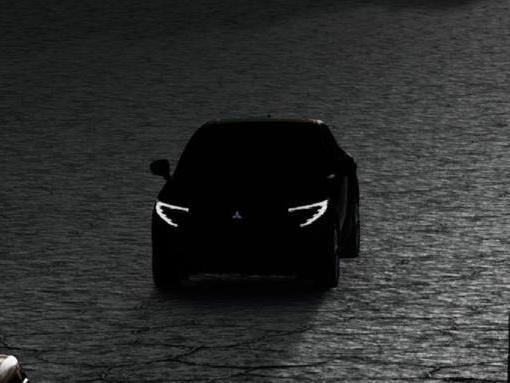
Mitsubishi to Launch Electric Vehicle Based on Nissan Leaf in Second Half of 2026
LienMay 8, 2025
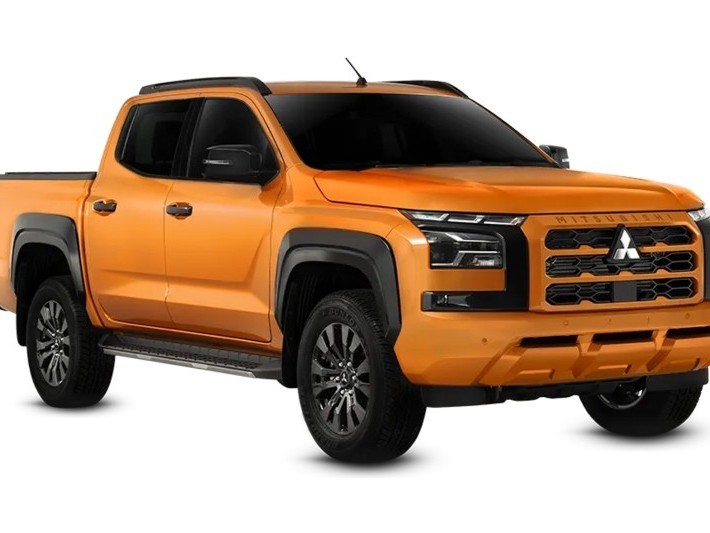
Why is the Mitsubishi Triton So Popular? Key: Sturdy Chassis and Excellent Four-Wheel Drive
WilliamApr 21, 2025
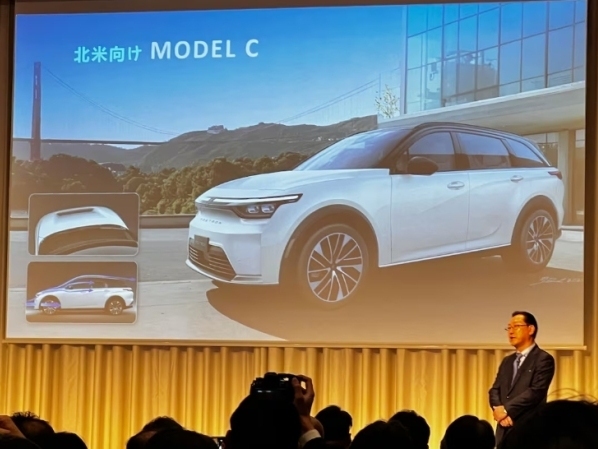
Foxconn, iPhone Manufacturer, Holds a Seminar in Tokyo to Attract Japanese Car Brands Partnerships
AshleyApr 10, 2025
View More






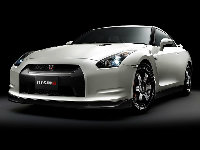





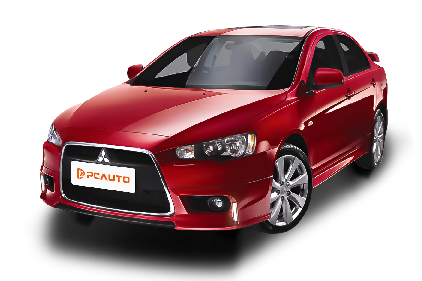



Pros
Cons